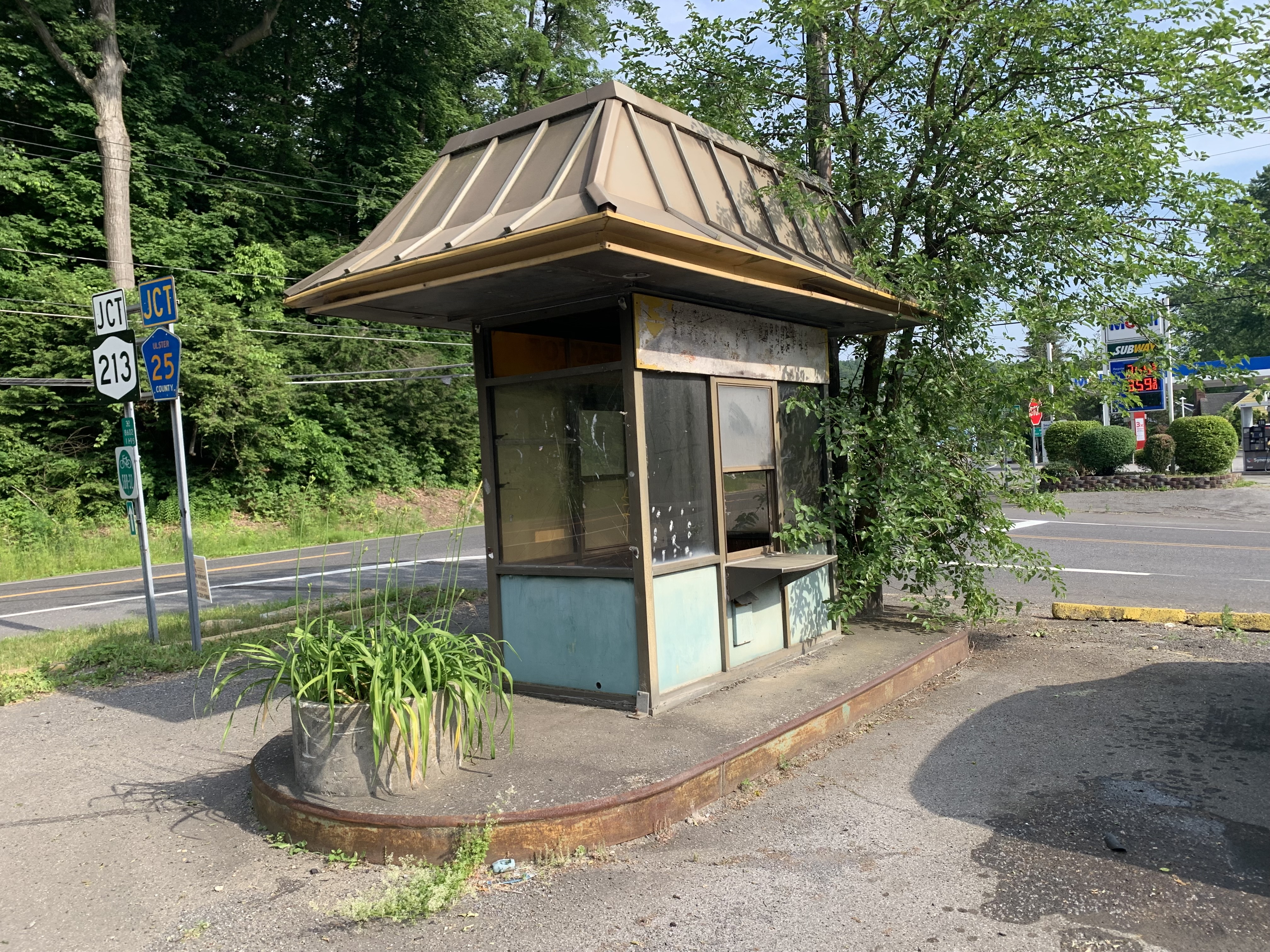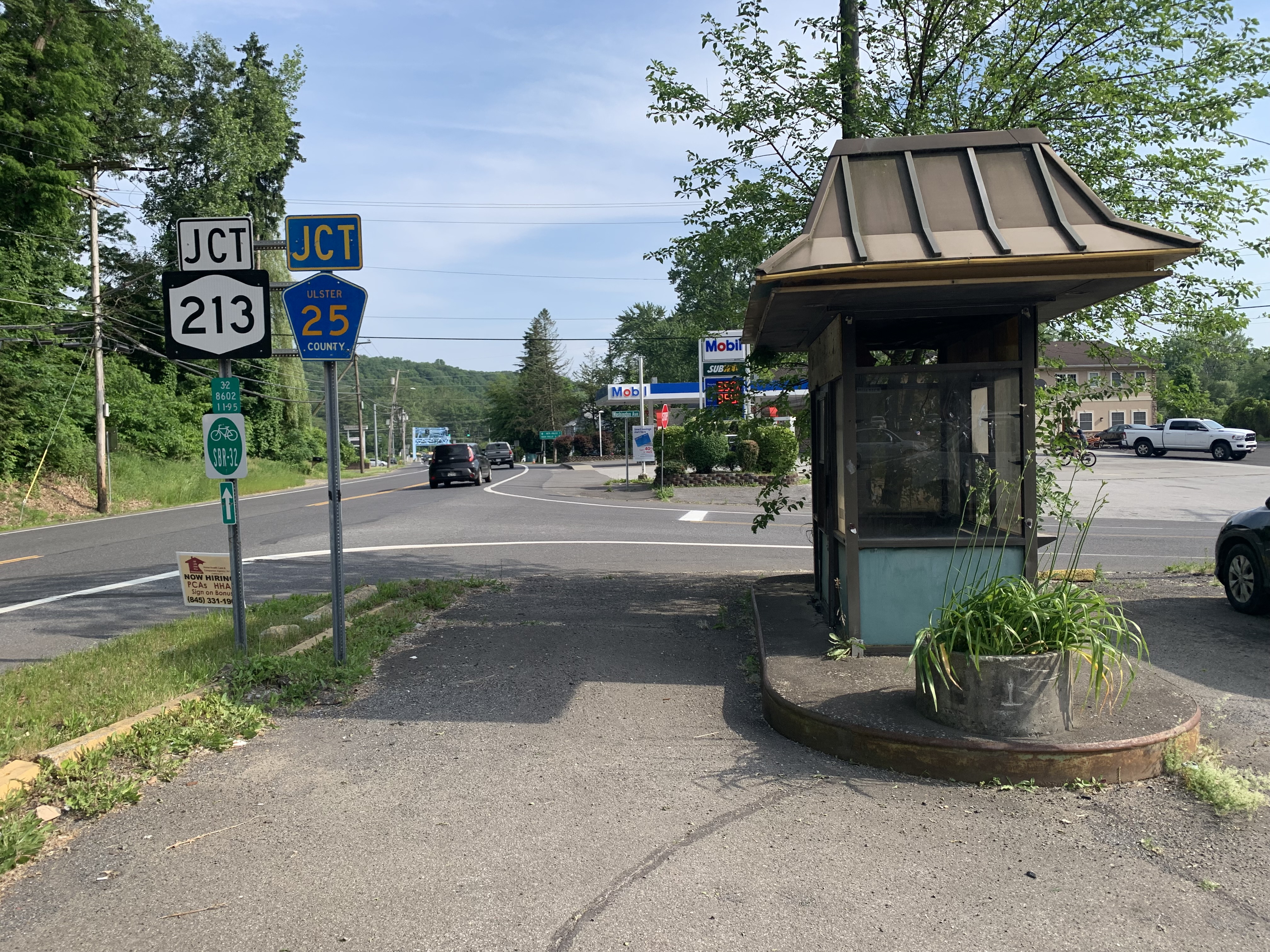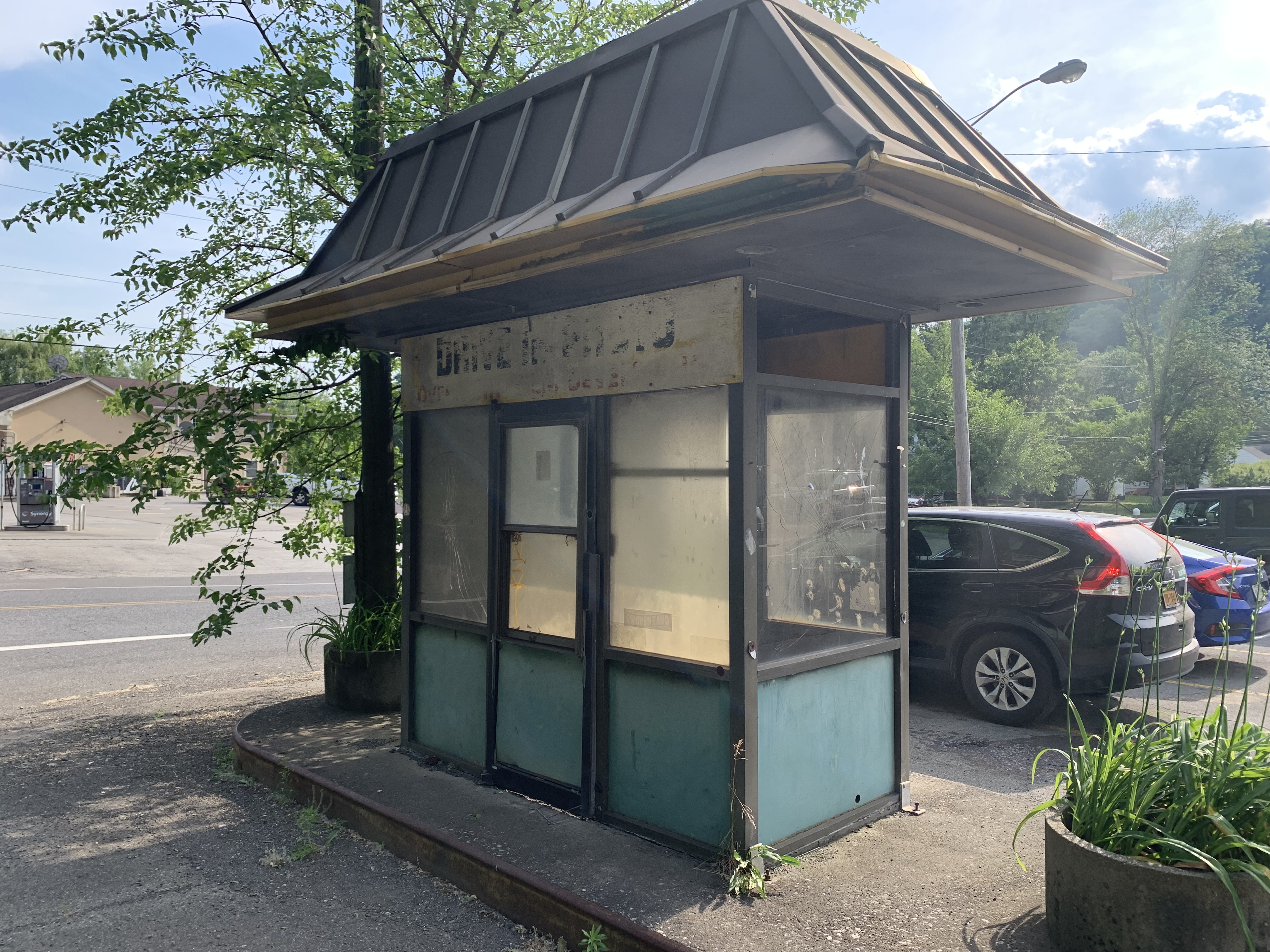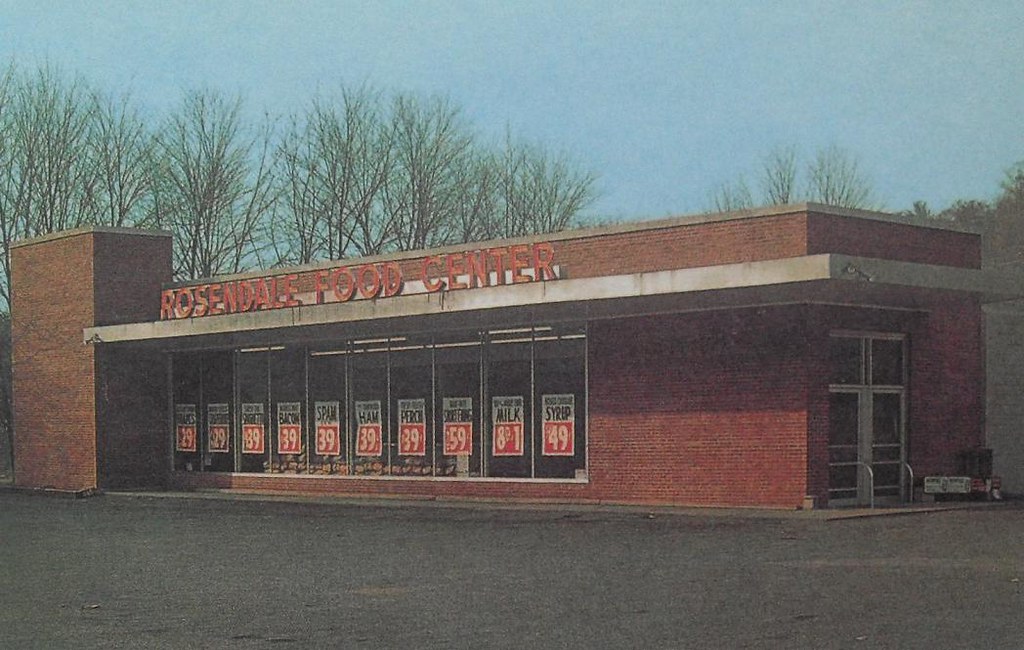✤ ✪ ✤ ✪ ✤ ✪ ✤ ✪ ✤ ✪ ✤ ✪ ✤ ✪ ✤ ✪ ✤ ✪ ✤
The Rosendale Tardis
✤ ✪ ✤ ✪ ✤ ✪ ✤ ✪ ✤ ✪ ✤ ✪ ✤ ✪ ✤ ✪ ✤ ✪ ✤

✤ ✪ ✤ ✪ ✤ ✪ ✤ ✪ ✤ ✪ ✤ ✪ ✤ ✪ ✤ ✪ ✤ ✪ ✤
You can find the Rosendale Tardis on Google Maps here - https://www.google.com/maps/place/Rosendale+Tardis/@41.8486336,-74.0780912,554m/data=!3m2!1e3!4b1!4m12!1m5!8m4!1e2!2s115823457679137672560!3m1!1e1!3m5!1s0x89dd1b00098d05cb:0x8d2015159be1547f!8m2!3d41.8486296!4d-74.0755163!16s%2Fg%2F11vy3w1616?entry=ttu
Or by using Google Plus Code RWXF+FQ Rosendale, New York in a Google Maps search.
This Hive article’s URL is backed up at Substack - https://dailyeagle.substack.com/p/rosendale-tardis
The location of the Rosendale Tardis is at the northwest corner of Rt. 32 & Washington Ave. in Rosendale, Ulster County, NY. It is situated in the parking lot of "Fann's Plaza." This is roughly one block north of the intersection of Rt. 32 & Rt. 213 ("Stewart's"). Caution is advised to beware against evil Dalek robots seeking to eradicate humanity. Weary travelers are advised to refresh at the Truss & Trestle Diner located directly across the parking lot.
A roadside tourist attraction located in Ulster County, New York, the Rosendale Tardis is an interdimensional (or "Trans-Dimensional") vortex cleverly disguised as an old Fotomat booth, used during the mid-to-late twentieth century as a drive-thru drop-off service for developing film photographs. More on Fotomat here - https://en.wikipedia.org/wiki/Fotomat
Entering the Rosendale Tardis may result in the occupant transporting through space & time to another location, planet, galaxy, dimension, or year (both past and future). The facility should be utilized with caution, and standard intergalactic disclaimers apply.
The Rosendale Tardis is a popular destination for Randonautic users, bored wayfarers, vagrants, and "Scooby-Doo" styled adventurers.
The TARDIS (/ˈtɑːrdɪs/; acronym for "Time And Relative Dimension In Space") is a fictional hybrid of a time machine and spacecraft that appears in the British science fiction television series Doctor Who and its various spin-offs. While a TARDIS is capable of disguising itself, the exterior appearance of the Doctor's TARDIS typically mimics a police box, an obsolete type of telephone kiosk that was once commonly seen on streets in Britain in the 1950s. Paradoxically, its interior is shown as being much larger than its exterior, commonly described as being "bigger on the inside".
Due to the significance of Doctor Who in popular British culture, the shape of the police box is now more strongly associated with the TARDIS than its real-world inspiration. The name and design of the TARDIS is a registered trademark of the British Broadcasting Corporation (BBC), although the design was originally created by the Metropolitan Police Service.[1][2]
✤ ✪ ✤ ✪ ✤ ✪ ✤ ✪ ✤ ✪ ✤ ✪ ✤ ✪ ✤ ✪ ✤ ✪ ✤

✤ ✪ ✤ ✪ ✤ ✪ ✤ ✪ ✤ ✪ ✤ ✪ ✤ ✪ ✤ ✪ ✤ ✪ ✤
Name
TARDIS is an acronym of "Time And Relative Dimension in Space". The word "Dimension" is alternatively rendered in the plural. The first story, An Unearthly Child (1963), used the singular "Dimension". The 1964 novelisation Doctor Who in an Exciting Adventure with the Daleks used "Dimensions" for the first time and the 1965 serial The Time Meddler introduced the plural in the television series - although the script had it as singular, actor Maureen O'Brien changed it to "Dimensions".[3] Both continued to be used during the classic series; in "Rose" (2005), the Ninth Doctor uses the singular (although this was a decision of actor Christopher Eccleston—[4] the line was scripted in the plural).[5] The acronym was explained in the first episode of the show, An Unearthly Child (1963), in which the Doctor's granddaughter Susan claims to have made it up herself.[6] Despite this, the term is used commonly by other Time Lords to refer to both the Doctor's and their own time ships.
Generally, "TARDIS" is written in all uppercase letters, but may also be written in title case as "Tardis". The word "Tardis" first appeared in print in the Christmas 1963 edition of Radio Times, which refers to "the space-time ship Tardis".[7]
✤ ✪ ✤ ✪ ✤ ✪ ✤ ✪ ✤ ✪ ✤ ✪ ✤ ✪ ✤ ✪ ✤ ✪ ✤

✤ ✪ ✤ ✪ ✤ ✪ ✤ ✪ ✤ ✪ ✤ ✪ ✤ ✪ ✤ ✪ ✤ ✪ ✤
Description
The Doctor's TARDIS as it looked between 2005 and 2010, on display at BBC Television Centre.
In the fictional universe of the Doctor Who television show, TARDISes are space- and time-travel vehicles of the Time Lords, beings from the planet Gallifrey. Although many TARDISes exist and are sometimes seen on-screen, the television show mainly features a single TARDIS used by the show's protagonist, a Time Lord who goes by the name of the Doctor.[8]
TARDISes are built with a "chameleon circuit", a type of camouflage technology that changes the exterior form of the ship to blend into the environment of whatever time or place it lands in. The Doctor's TARDIS always resembles a 1960s London police box, an object that was very common in Britain at the time of the show's first broadcast.[9] Owing to a malfunction in the chameleon circuit after the events of the first episode of the show, An Unearthly Child, the Doctor's TARDIS is stuck in the same disguise for a long period.[8][10] The Doctor has attempted to repair the chameleon circuit, unsuccessfully in Logopolis (1981) and with only temporary success in Attack of the Cybermen (1985). In the 2005 television story "Boom Town", the Doctor reveals that he has stopped trying to repair the circuit as he has become fond of its appearance. The other TARDISes that appear in the series have chameleon circuits that are fully functional.[11]
While the exterior is of limited size, the TARDIS is famously "bigger on the inside". Behind the police box doors lies a large control room, at the centre of which is a hexagonal console for operating the TARDIS. In the middle of the console is a moving tubular device called a time rotor. The presence of a physically larger space contained within the police box is explained as "dimensionally transcendental", with the interior being a whole separate dimension containing an infinite number of rooms, corridors and storage spaces, all of which can change their appearance and configuration.[12][13][10] The TARDIS also allows the Doctor and others to communicate with people who speak languages other than their own, as well as turn all written languages to English. The "translation circuit" (occasionally called the "translation matrix") was first explored in The Masque of Mandragora (1976), as the Doctor explained to his companion, Sarah Jane, "Well, I've taken you to some strange places before and you've never asked how you understood the local language. It's a Time Lord's gift I allow you to share. But tonight when you asked me how you understood Italian, I realized your mind had been taken over." The translation circuit has also been explored in comparison with real-world machine translation, with researchers Mark Halley and Lynne Bowker concluding that "when it comes to the science of translation technology, Doctor Who gets it wrong more often than it gets it right. However, perhaps we can forgive the artistic license if we recognize that, as in other science fiction works, the presentation of some type of ubiquitous translation tool is necessary to explain to the audience how people from other countries, time periods, and even other worlds, can understand each other and indeed appear to speak (mostly) flawless English."[14]
The TARDIS also has other special abilities: it can produce a large, invisible air bubble around its exterior that allows occupants to survive in an area that lacks oxygen as long as they are close to it and in one episode, it can create a bridge tunnel that occupants can use to cross over to out-of-reach areas such as another ship.[15] The TARDIS is also shown to be strong enough to tow other ships and planets[16] and can even withstand black holes.[17] It is also able to generate a "perception filter" that causes people to ignore it, thinking that it is normal.[18] In another episode, it also has a function called the Hostile Action Displacement System (H.A.D.S), which makes it teleport away if it senses danger and will not return until after the danger is dealt with.[19] In the 60th anniversary special The Giggle, the Fifteenth Doctor uses the last vestiges of the Toymaker's energies to create his own customized TARDIS, separate from the Fourteenth Doctor's, including a foldable ramp at the exterior door, making the TARDIS wheelchair-accessible. It has been said by Russell T. Davies that the Fifteenth Doctor's TARDIS is in fact the original TARDIS.
✤ ✪ ✤ ✪ ✤ ✪ ✤ ✪ ✤ ✪ ✤ ✪ ✤ ✪ ✤ ✪ ✤ ✪ ✤

✤ ✪ ✤ ✪ ✤ ✪ ✤ ✪ ✤ ✪ ✤ ✪ ✤ ✪ ✤ ✪ ✤ ✪ ✤
More info, footnotes & citations - https://en.wikipedia.org/wiki/TARDIS
✤ ✪ ✤ ✪ ✤ ✪ ✤ ✪ ✤ ✪ ✤ ✪ ✤ ✪ ✤ ✪ ✤ ✪ ✤

Daily Eagle News
Established July 4, 2019
http://dailyeagle.news